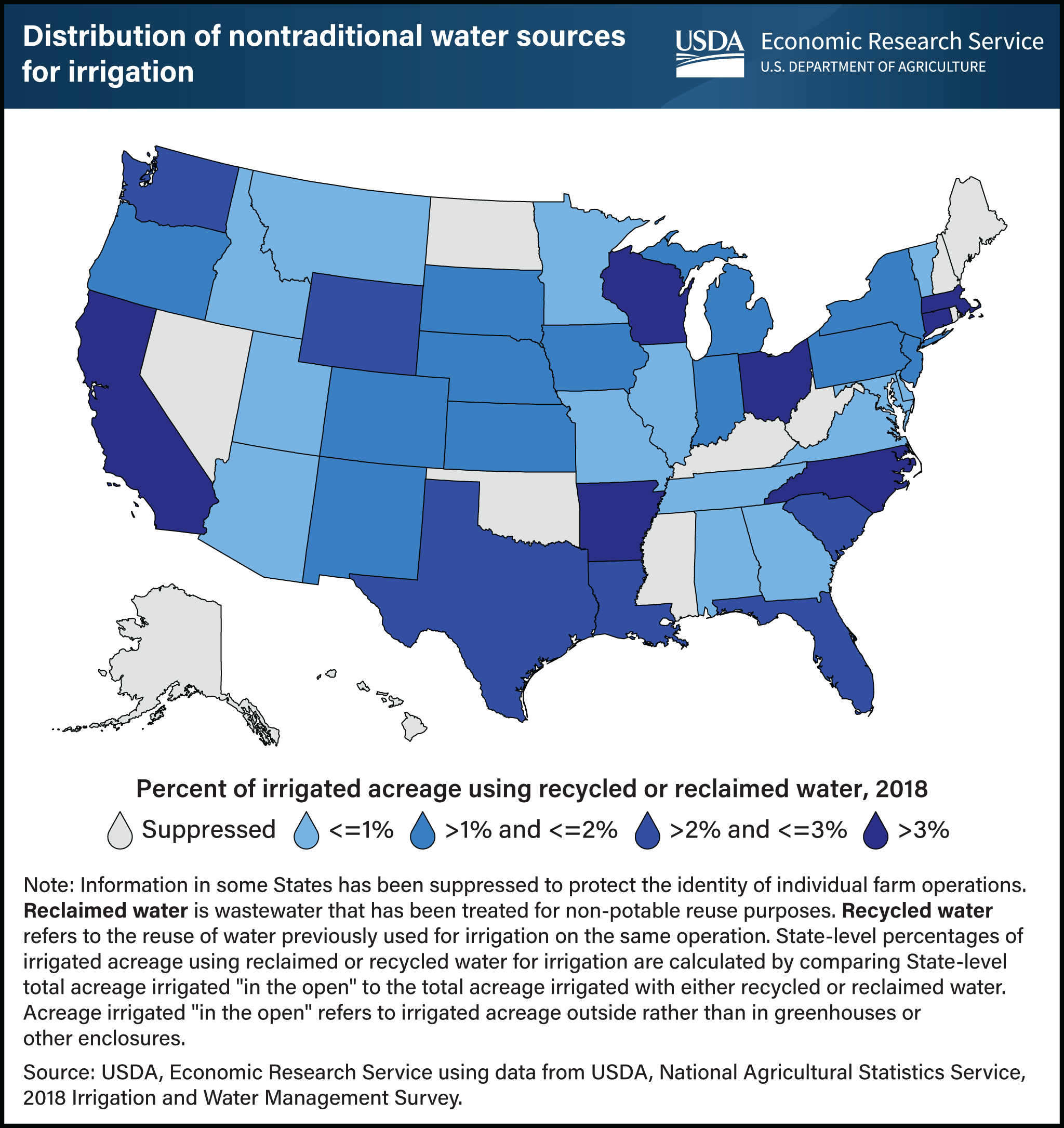Use of recycled and reclaimed water sources for irrigation varies across the United States
- by R. Aaron Hrozencik
- 3/22/2023

Water scarcity and water quality concerns in the United States have resulted in using nontraditional water sources, including recycled and reclaimed water, for irrigation. In 2018, producers used recycled and reclaimed water to irrigate crops on about 1.5 million acres in the United States, the most recent year for which data are available. Some acreage may use both recycled and reclaimed water for irrigation. California, Arkansas, Wisconsin, Ohio, North Carolina, Connecticut, and Massachusetts had the highest proportion of acreage where producers applied recycled or reclaimed water. In all these States, at least 3 percent of irrigated acreage relies on recycled or reclaimed water to meet crop irrigation needs. Reclaimed water for use on farms comes from sources such as industrial, municipal, and off-farm and on-farm animal operations. Municipal and on-farm animal operations were the most common sources of reclaimed water of the farms using reclaimed water in 2018. This chart was drawn from data collected by the USDA, National Agricultural Statistics Service.
We’d welcome your feedback!
Would you be willing to answer a few quick questions about your experience?

